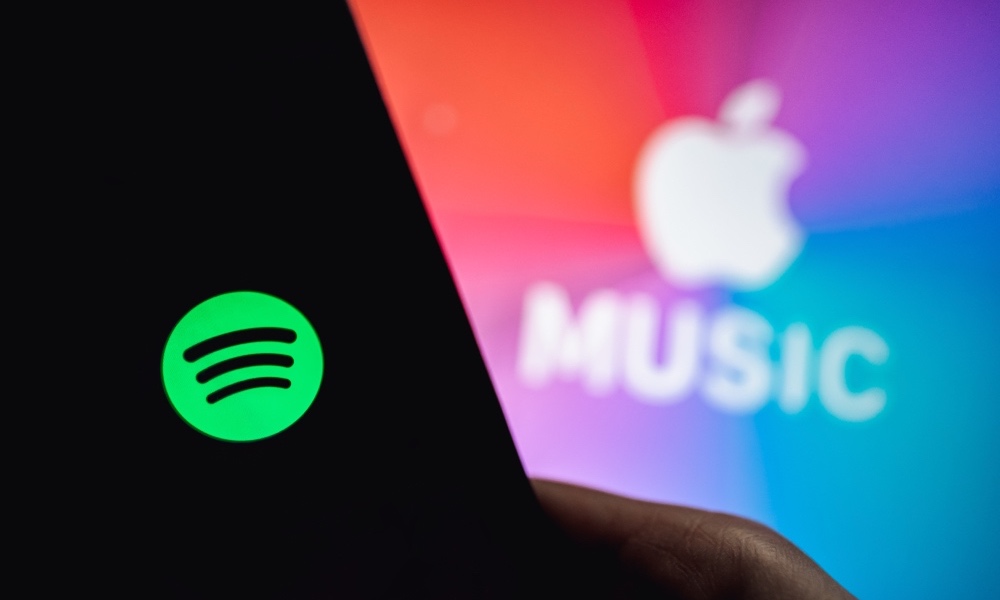Still Paying for Spotify through the App Store? Not For Much Longer
 Credit: Charnsitr / Shutterstock
Credit: Charnsitr / Shutterstock
Toggle Dark Mode
It may seem quaint considering everything that’s been going on between Spotify and Apple in the past few years, but there was once a time when you could pay for Spotify Premium via an in-app subscription. What’s even more surprising is that a few long-time subscribers may still be paying for the service this way.
However, that will soon come to a screeching halt as Spotify begins cutting off its Premium subscribers from that era who haven’t moved away from paying for their subscriptions through Apple’s payment services.
Since Spotify hasn’t allowed in-app subscriptions in about seven years, this likely doesn’t affect many people. Still, Spotify has clearly decided to cast off those few legacy subscriptions, forcing them to sign up directly if they want to continue paying for Spotify Premium. However, it may also be doing those people a favor.
According to Variety, Spotify has been sending out emails to those who still pay for Spotify Premium this way, telling them that Apple’s billing service is no longer accepted as a form of payment.
“We’re contacting you because when you joined Spotify Premium you used Apple’s billing service to subscribe. Unfortunately, we no longer accept that billing method as a form of payment.”
The email goes on to tell customers that their premium subscriptions will automatically be canceled at the end of the final billing period, after which they will need to visit Spotify’s website to resubscribe using a credit card, debit card, or PayPal — after their account has been moved over to the ad-supported Free plan.
The 30% commission that Apple takes on Spotify purchases has long been a major point of contention that the streaming service has against Apple, pushing the European company to file an antitrust complaint in 2019, alleging that the 30% “Apple tax” is stifling competition and harming consumers. While the complaint moved at the kind of speed typical of large government entities, the European Commission finally handed down a Statement of Objections earlier this year, partly siding with Spotify — particularly when it came to Apple’s highly controversial “anti-steering” provisions — the clause that prohibits developers from even telling potential customers that there’s another way to sign up for their services.
For its part, Apple has accused Spotify of being disingenuous about how much the so-called “Apple tax” is actually costing it, noting that the few Spotify Premium subscribers that paid through the App Store from 2014 to 2016 — the only period in-app subscriptions were available — worked out to less than 1% of Spotify’s 100 million premium subscribers. Further, Spotify only had to pay a 15% revenue share for most of those since Apple drops its commission for subscriptions that extend beyond twelve months.
That number also gives us an idea of how many people will likely be impacted by this sudden change. During the two-year window that Spotify offered in-app subscriptions, only around 680,000 people used that as a payment method. After Spotify closed the door on in-app subscriptions in 2016, existing subscribers were allowed to keep paying that way, although it’s likely not too many did.
Seven years is a long time. During that period, some likely dropped Spotify entirely to switch to another service like Apple Music, while others canceled their Premium and reverted to the free, ad-supported plan — after which the only way to re-subscribe to Premium would be by direct billing through the Spotify website. Some may have moved to a bundled Spotify Premium service available through some mobile providers.
The fact that Spotify refused to eat the Apple tax would have likely driven even more people to switch to direct billing to save money. In-app subscriptions to Spotify were always priced 30% higher at $12.99, effectively passing the cost of using the App Store on to the customers. This was Spotify’s chief anti-competitive complaint against Apple since it priced its own Apple Music service at $9.99 while Spotify was “forced” to charge more due to Apple’s 30% commission.
In other words, anybody who has been paying for Spotify through the App Store for the past seven years has spent $250 more over that period than they would have by subscribing to Spotify directly in the first place.
Spotify wasn’t the only company to charge higher prices for in-app subscriptions. While it stopped offering this as a payment method entirely years ago, Google still offers YouTube Premium subscriptions through the YouTube app — and charges about 30% more for those who subscribe that way.







